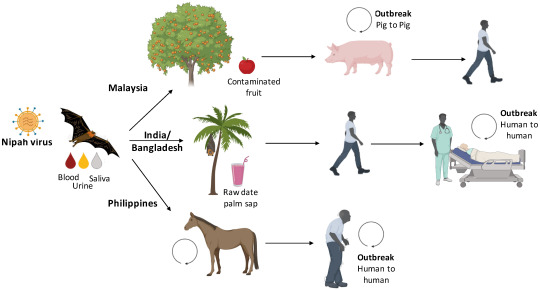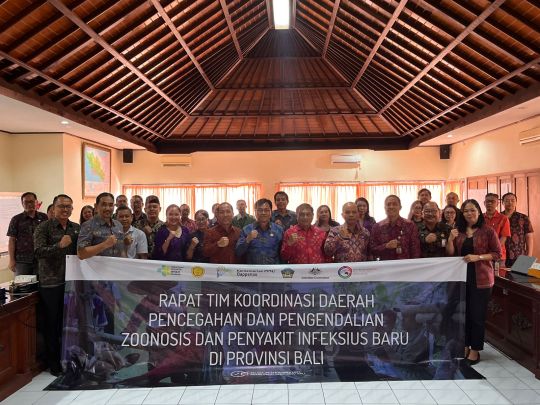#zoonosis
Text
Infectious disease, captive animals, and the Endangered Species Act
There's been a really interesting development in how the Endangered Species Act relates to captive animals in the United States. I picked up on it last fall and spent most of the early part of this year writing a paper about what happened and what implications it might have in the future - but what I didn't expect was to proved right within a month!
Basically, two different lower court judges have ruled recently that exposing captive endangered animals to an increased risk of infectious disease is a violation of the Endangered Species Act. They don’t actually have to get sick - just the fact that the risk wasn’t prevented qualifies. This has super huge implications for zoos and sanctuaries and anywhere else with an endangered species collection. Both lawsuits (one about a lemur, and one about some of the tiger king lions) resulted in major consequences: the lemurs were seized, and since the lions had already been removed prior to that lawsuit, the guy involved got hit with major penalties and prohibitions for the future.
Where I think this potentially creates the most immediate issue is, of course, SARS-CoV-2. Most zoological facilities are ending their requirements for staff to mask and socially distance around susceptible species (and holy heck, I was not aware how many species can get sick from it). This is especially a huge concern for big cats, since they seem to be the most at risk. The ESA lawsuit from 2020, against Jeff Lowe for his treatment of lion cubs, specifically notes that it was a violation for him to not follow “generally accepted” risk mitigation procedures, specifically, not masking and not distancing. So does that mean that zoos and sanctuaries that are having staff stop masking around tigers and lions and snow leopards are violating the ESA? We don’t know for sure, but it’s entirely possible.
The reason we don’t know is that the scope of the ESA is being changed by the interpretation of the courts. Rather than getting amendments passed, or having FWS choose to consider certain things violations, these judges are basically ruling on what they see as a violation of their understanding of the law. And those precedents can have some pretty serious impacts. Other judges aren’t required to rule the same way on similar topics (as long as they’re not in the same district, and a lower court, than the original ruling) but they often take previous precedents on the topic into pretty serious consideration. So for example, the argument that not masking around the lions was based on a precedent from the previous case, where it was ruled that having a lemur living in a situation that made it more likely to get sick was also a violation. So in the next case, courts could choose to agree with the lion and lemur precedents - or not - and we don’t know for sure until it’s litigated. Sigh.
But here’s the thing: there’s plenty of other zoonotic diseases that captive animals have to be protected from. I wrote my paper originally about SARS-CoV-2, but noted at the end that “While SARS-CoV-2 was the zoonotic disease risk during the [lion] court case, it is important to recognize that the ESA violations identified by the courts in that lawsuit and in [the lemur court case] were on the topic of increased or unmitigated disease risk more generally. This new scope of the ESA captive take provision may be relevant to other circulating zoonotic pathogens; for instance, the H5N1 strain of avian influenza has recently proven to be fatal to tigers, mustelids, and some marine mammal species.” I realized after publication that it could be argued that EEHV - the really deadly elephant hemorrhagic herpes virus - might also fall under the scope of these rulings.
And surprise! A couple days ago, it made the news that the Noah’s Ark Animal Sanctuary in Georgia was told to change their practices or be sued for violating the ESA. Some of the allegations? That the facility “failed to prevent tigers and a lion from exposure to the potentially deadly Avian Influenza virus.” I expected to see additional claims in ESA lawsuits about infectious disease risk - I just didn’t expect to see them so quickly after I published a big project warning about the possibility.
I don’t have a sense of where this issue will continue to go from here, as each additional court decisions changes how the precedent might have impacts. But I do think it’s going to be important to pay attention to, and might have pretty big impacts on how facilities handle zoonotic disease moving forwards.
A link to the full 13-page paper on the legal precedents - and my concerns about the impact of ending SARS-CoV-2 precautions around endangered animals - is below.
#endangered species#zoo management#zoos#tigers#lions#zoonosis#endangered species act lawsuit#litigation#covid#HPAI
248 notes
·
View notes
Photo

Spoil Spores
A potentially fatal disease caused by the spores of the bacterium Bacillus anthracis, anthrax is often discussed for its potential as a sinister biological weapon. Yet typical infection routes are more mundane, through contact with contaminated water, soil, or infected animals. In particular, herbivores like cattle can ingest naturally-occurring spores in soil while grazing. Vaccines provide effective protection against infection, but spores can remain dormant in soil for several years, so livestock should be regularly vaccinated wherever anthrax was once present. In northern Vietnam, where domesticated water buffalo (Bubalus bubalis, pictured) are major hosts for B. anthracis, recent records show substantial overlap between anthrax cases in humans and livestock, while virtually all cases with sufficient information involved contact with sick or dead animals, or meat. More happily, fewer human cases were reported when livestock vaccination rates were high, demonstrating the importance of vaccination for protecting animals, humans and their livelihoods.
Written by Emmanuelle Briolat
Image by Jason K. Blackburn, Spatial Epidemiology and Ecology Research Laboratory (SEER Lab), University of Florida, Gainesville,FL, USA
and research by Luong Minh Tan, Doan Ngoc Hung et al JK Blackburn lab & Provincial Center for Disease Control, Dien Bien Phu City, Dien Bien, Vietnam
Image copyright held by Jason K Blackburn
Published in PLOS Neglected Tropical Diseases, December 2022
You can also follow BPoD on Instagram, Twitter and Facebook
#science#biomedicine#anthrax#vietnam#water buffalo#disease control#zoonosis#bacteria#bacterial infection
9 notes
·
View notes
Note
Is foot-and-mouth still zoonotic disease?
gettingvetted here.
Foot and Mouth Disease (FMD) has never been zoonotic. Animals/herds with the disease are depopulated (euthanized en masse) simply because it is a highly contagious and severe disease and has a huge impact on livestock species which are important for food production.
28 notes
·
View notes
Text


16 notes
·
View notes
Text

Zoonosis [ゾーアーノシス] (biology, microbiology) An animal disease, such as rabies or anthrax, that can be transmitted to humans.
2 notes
·
View notes
Text
El Centro de Zoonosis de Vicente López atiende mascotas en su sede y en jornadas móviles
Lo anunció el municipio en una comunicación. El Centro de Zoonosis está en Cap. Justo G. de Bermúdez 3484. Atiende de lunes a viernes de 8 a 16; y también los sábados de 8 a 12. Los profesionales del organismo, señaló la información, previenen o tratan enfermedades que afectan a los animales; y advirtió que, en algunos caos, además, estas afecciones pueden llagar a transmitirse a las y los…

View On WordPress
0 notes
Text
INQUIETUD ANTE LA ENCEFALOMIELITIS EQUINA QUE PUEDE TRANSMITIRSE A LOS HUMANOS

Si bien el Director de Bromatología y Zoonosis de Florencio Varela, Veterinario, Dr. Alejandro Zanini, afirmó en la radio oficial del municipio que los vecinos “no se deben preocupar sino ocupar de esta temática”, veterinarios privados que atienden población equina de la zona no están tranquilos y advierten de la peligrosidad para los humanos por picaduras de mosquitos transmisores.
La emergencia sanitaria por el brote de encefalomielitis equina sigue vigente debido a su rápida expansión. Este virus, que se trasmite por medio de picaduras de mosquitos, avanza a gran velocidad por la Argentina y Uruguay, preocupando a las autoridades sanitarias.
Muchas zonas de Florencio Varela están rodeadas y cruzadas por causes de agua a cielo abierto, ya sean arroyos, zanjas, tosqueras, grandes charcos tras las lluvias… Casualmente, estas zonas suelen ser las de menor ingreso económico y mayor faltante de agua de red. Un coctel explosivo donde el acopio de agua para los días de baja o nula presión y calor… Se trata de grandes extensiones donde es imposible erradicar la población de mosquitos.
“Encefalomielitis equina es una enfermedad que está afectando muchos caballos. La transmite un mosquito y el virus está en las aves (reservorio). El mosquito va y pica a cualquier ave y luego pica al caballo y ahí arranca el cuadro de la enfermedad”, explicó el Director de Bromatología y Zoonosis de Florencio Varela, Veterinario, Dr. Alejandro Zanini.
En casos de contagio con la variante del Oeste, los humanos no suelen presentar signos, ya que se desarrolla muy leve en los adultos y con muy pocas muertes. La sintomatología incluye fiebre, escalofríos, dolor de cabeza, náuseas, vómitos y pérdida de apetito.
En tanto, en equinos, la tasa de letalidad puede llegar al 90% en el caso de la variante Encefalitis Equina del Este (EEE), y es de entre 20 a 30% para la Encefalitis Equina del Oeste (EEO), mientras que el resto de los afectados puede convalecer y, en algunos casos, quedar con secuelas. La mayoría de las infecciones presenta un cuadro clínico leve en el que el tratamiento es sintomático, mientras que los pacientes con signos neurológicos son evaluados por especialistas y requieren un monitoreo estrecho.
El último brote fue del año 1988, se desconoce que haya habido casos humanos”, remarcó el jueves pasado a la radio municipal.
Ante este panorama, el Servicio Nacional de Sanidad Animal y Calidad Agroalimentaria (SENASA) informó que hubo 324 brotes de la encefalomielitis en equinos en 7 de las 24 provincias de la Argentina. Además, al menos 35 animales perdieron la vida.
“Todos los pasos a seguir los está alineando SENASA y desde provincia y municipio estamos asesorando a los productores. No se deben preocupar sino ocupar de esta temática. Se aconseja: no fumigar, mantener el pasto corto, descacharrizar, ordenar y limpiar los establos para evitar que el mosquito se reproduzca”, destacó el Director de Bromatología y Zoonosis de Florencio Varela, Veterinario, Dr. Alejandro Zanini.
Se trata de una reemergencia de un virus que puede causar un tipo de encefalitis en equinos y, con menor frecuencia, en los seres humanos. Este patógeno pertenece al género de los alfavirus. La enfermedad, en sus distintas variantes, es considerada una “amenaza para la salud pública internacional” por su “alto potencial para traspasar fronteras”, según la Organización Mundial de la Salud (OMS).
Los animales afectados se encontraban en las localidades de las provincias de Buenos Aires, Chaco, Corrientes, Córdoba, Santa Fe, y Entre Ríos, Formosa y, además, hay muestras en estudio de animales de las provincias de Neuquén, Mendoza, Misiones y Santiago del Estero.
“Existe una vacuna para los animales que siempre estuvo disponible, había que hacer un encargue pero dejo de exigirse (durante el 2016) y hoy estamos atravesando estos casos”, comentaba el funcionario municipal a la radio del gobierno local la semana pasada.
Tras la detección de este virus, se comenzaron a tomar medidas relacionadas con la vacunación de los animales debido a que, en septiembre de 2016, el SENASA había dictado una resolución en la cual se establecía que la vacunación quedaba a criterio del veterinario responsable de los animales o del propietario.
Pero, cuando se confirmaron los primeros brotes, el organismo público puso a ruedo la Disposición 363/2023 y fijó que los organizadores de eventos que concentran caballos debían exigir la vacunación antes del ingreso de los animales, aplicada -al menos- 15 días antes del movimiento.
Para prevenir el impacto del virus en los equinos se debe vacunar lo antes posible al animal y, para frenar la actividad viral, hay que acabar con los mosquitos que la propagan y que ponen en riesgo a caballos y humanos
En lo que respecta a los seres humanos, todavía no hay vacuna disponible. Por este motivo, la principal medida de prevención es evitar la picadura de mosquitos que pudieran estar infectados con el virus. Además, se aconsejan las siguientes medidas:
• Se deben eliminar o proteger recipientes y otros objetos que puedan acumular agua dentro de los establecimientos de cría, viviendas y en sus alrededores.
• Se deben colocar telas mosquiteras en puertas y ventanas de recintos de animales y viviendas.
• Se debe usar ropa de trabajo clara y de manga larga.
• Utilizar espirales en el exterior y pastillas o aerosoles en el interior de las edificaciones.
• Se deben aplicar periódicamente repelentes de insectos con el ingrediente activo DEET (N,N-dietil-meta-toluamida) mientras se realizan tareas en el exterior o dentro de establecimientos de animales
Se debe tener en cuenta que la cantidad de horas entre las aplicaciones del repelente dependerá de la concentración de DEET del producto empleado. Por ejemplo, un producto con 30% de DEET debe ser aplicado cada 6 horas mientras que uno que contiene 10% de DEET debe ser renovado cada 2-3 horas.
El uso de repelentes con citronella como principio activo tiene un efecto menor que los que contienen DEET.
Read the full article
#BROMATOLOGIA#caballos#contagio#ecefalomielitis#emergenciasanitaria#FlorencioVarela#humanos#zoonosis
0 notes
Text
Mengenal Virus Nipah
Virus Nipah adalah salah satu virus yang dapat menyebabkan penyakit menular yang berbahaya bagi manusia dan hewan. Virus ini pertama kali ditemukan pada tahun 1998 di Malaysia, ketika terjadi wabah penyakit pernapasan dan ensefalitis (radang otak) pada manusia yang berhubungan dengan babi. Nama virus ini berasal dari Kampung Sungai Nipah, tempat di mana wabah tersebut terjadi.
Virus Nipah dapat…

View On WordPress
#batuk#demam#infeksi menular#infeksi virus#kejang#nyeri kepala#penyakit menular#virus nipah#zoonosis
0 notes
Text
Puma cachorro rescatado por la Unidad de Zoonosis
Un puma cachorro hembra, de aproximadamente 8 meses fue rescatado por la Unidad de Zoonosis de la Alcaldía de Morros Blancos y trasladado al Bioparque Urbano para su cuarentena. Luis Morales, director de Zoonosis afirmó que el animal había sido criado como mascota, situación que no está permitida y conlleva un grave daño a los equilibrios ecológicos. La cachorro fue tratada y estabilizada…

View On WordPress
0 notes
Text
Puma cachorro rescatado por la Unidad de Zoonosis
Un puma cachorro hembra, de aproximadamente 8 meses fue rescatado por la Unidad de Zoonosis de la Alcaldía de Morros Blancos y trasladado al Bioparque Urbano para su cuarentena. Luis Morales, director de Zoonosis afirmó que el animal había sido criado como mascota, situación que no está permitida y conlleva un grave daño a los equilibrios ecológicos. La cachorro fue tratada y estabilizada…

View On WordPress
0 notes
Text
Pencegahan dan Pengendalian Zoonosis dan Penyakit Infeksius Baru, BPBD Bali Dorong Keterlibatan Masyarakat dan Kabupaten/Kota

BALIPORTALNEWS.COM, DENPASAR - Badan Penanggulangan Bencana Daerah (BPBD) Provinsi Bali melaksanakan Rapat Koordinasi Daerah Pencegahan dan Pengendalian Zoonosis dan Penyakit Infeksius Baru Provinsi Bali pada Selasa (26/9/2023) bertempat di Kantor BPBD Provinsi Bali.
Dipimpin oleh Kalaksa BPBD Provinsi Bali, I Made Rentin, rapat koordinasi tersebut juga dihadiri oleh Kepala Dinas Kesehatan Provinsi Bali, I Nyoman Gede Anom dan Kepala Dinas Pertanian dan Ketahanan Pangan Provinsi Bali, I Wayan Sunada. Tujuannya adalah untuk menyusun rencana aksi Tim Koordinasi Daerah Pencegahan dan Pengendalian Zoonosis dan Penyakit Infeksius Baru Provinsi Bali.
Sebelumnya Pembentukan dan Susunan Keanggotaan Tim Koordinasi Daerah Pencegahan dan Pengendalian Zoonosis dan Penyakit Infeksius Baru Provinsi Bali telah diatur melalui SK Gubernur Bali No. 248/03-B/HK/2023 yang terdiri dari beberapa kelompok kerja antara lain kelompok kerja surveilans berbasis masyarakat (Pokja SBM), kelompok kerja surveilans terpadu, kelompok kerja komunikasi, informasi dan edukasi (Pokja KIE) dan tim respons cepat (TRC).
Menurut I Made Rentin, Tim koordinasi daerah ini dilatarbelakangi atas Pandemi Covid-19 yang telah menurunkan kinerja penanggulangan penyakit menular di Provinsi Bali.
“Sehingga perlu dibentuk tim koordinasi daerah pencegahan dan pengendalian zoonosis dan penyakit infeksius baru,” ujar Rentin.
Menurutnya hal ini sangat penting dilakukan mengingat besarnya jumlah angka kesakitan dan kematian penyakit menular yang berdampak pada kehidupan dan penghidupan masyarakat bali.
Kepala Dinas Kesehatan Provinsi Bali, I Nyoman Gede Anom menyampaikan, bahwa Satgas ini mengadopsi Satgas Penyakit Mulut dan Kuku Provinsi Bali.
“Anggotanya adalah OPD Pemprov Bali serta lintas OPD lainnya. Dengan adanya rapat koordinasi ini saya harap dapat menyempurnakan SK yang sudah ada,” jelas Gede Anom.
Disisi lain Kepala Dinas Pertanian dan Ketahanan Pangan Provinsi Bali, I Wayan Sunada berharap dengan adanya kolaborasi dapat memudahkan proses penanggulangan terkait hal tersebut.
Sementara itu terkait percepatan pengendalian penyakit zoonosis prioritas di Provinsi Bali seperti rabies, Made Rentin menyampaikan diperlukan keterlibatan aktif masyarakat.
“Saya rasa kita perlu mendorong keterlibatan masyarakat yang selama ini dilaksanakan lewat program Tim Siaga Rabies (TISIRA) di tingkat desa di seluruh kabupaten/kota,” ungkapnya.
Termasuk juga membentuk tim koordinasi daerah pencegahan dan pengendalian zoonosis dan penyakit infeksius baru di seluruh kabupaten/kota di Provinsi Bali.(bpn)
Read the full article
#BaliPortalNews#BPBDBali#Denpasar#PencegahandanPengendalian#PenyakitInfeksiusBaru#TimSiagaRabies#Zoonosis
0 notes
Text
「流行病、パンデミック、終わりのない物語? »: 研究、市民、社会への質問
youtube
Covid-19のパンデミックから3年が経過し、気候変動がウイルスの出現を加速させる可能性があることを背景に、パスツール研究所は2022年12月7日、エマニュエル・マクロン仏大統領の後援のもと、「疫病、パンデミック:終わることのない物語」と題する会議を開催した。この会議は一般にも公開され、科学的プログラムはパスツール研究所の2人の専門家によって作成された。細胞微生物学を専門とする生物学者で2002年からアカデミー・デ・サイエンスのメンバーであるパスカル・コサール氏と、ウイルス学者でパスツール研究所のウイルス・免疫ユニットの責任者であるオリバー・シュワルツ氏である。新興感染症は常に話題であり、Covid-19のパンデミックによって最前線に躍り出た。しかし、すべてが疫学者だけの問題ではない。社会的、経済的、政治的背景もまた、伝染病の深刻さと持続性に一役買っている。だからこそ、環境、動物や人間の集団のモニタリングを含む学際的なワンヘルス・アプローチが、将来の伝染病やパンデミックを理解し、予防し、封じ込めるための最大の希望となるのである。
0 notes
Text
3 British citizens have been infected with Brucella canis, a dog disease previously unseen in UK canines. The infection can cause infertility & mobility issues in dogs. It can be transmitted to humans through contact with infected bodily fluids.
0 notes
Text
Zoonoses can be described as infections that people can get from animals.
#zoonoses#zoonosis#animals#infections#humans#infection#zoonotic#species#drugcarts#onlinepharmacy#pharmacy#medicine#healthcare#doctors
0 notes
Link
The United States, the largest importer of wildlife in the world, is not prepared for future spread of animal-borne, or zoonotic, diseases due to gaps among governmental agencies designed to combat these threats, concludes a new analysis by researchers at Harvard Law School and New York University.
0 notes
Text
Jornada de Zoonosis en Villa Martelli
Es itinerante y este martes 12 tendrá lugar en la Plaza Almafuerte (Gral. Las Heras 5000, Villa Martelli). El horario de atención será a partir de las 9 de la mañana y habrá 15 números de atención para castraciones, que serán entregados por orden de llegada. También habrá vacunación y desparasitación de perros y gatos, informó la comuna. Por más información del servicio de Zoonosis, ingresar a:…

View On WordPress
0 notes